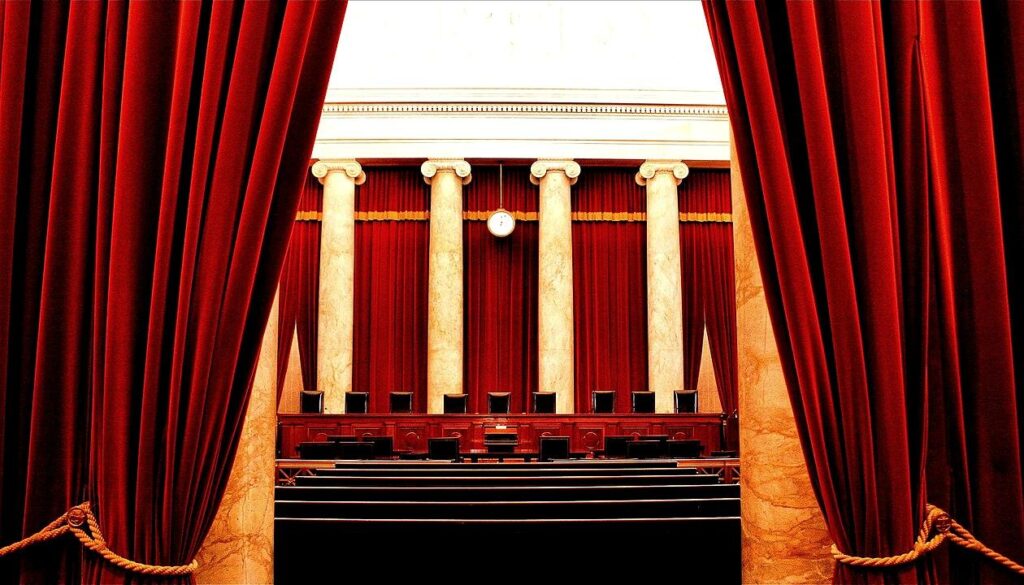Windsor: An Update on the Same-Sex Marriage March

I wrote about this case in the \”Love & the Law\” series. It has huge estate planning implications for the LGBT community and recently, the Obama Administration has recommended it instead of other same-sex marriage cases that the U.S. Supreme Court is deciding whether to hear. Factual synopsis: When Thea died, the federal government refused to recognize her marriage to Edie (they were legally married in Toronto, Canada) and taxed Edie\’s inheritance from Thea as though they were strangers. Under federal tax law, a spouse who dies can leave her assets, including the family home, to the other spouse without incurring estate taxes. Traditionally, whether a couple is married for federal purposes depends on whether they are considered married in their state. New York recognized Edie and Thea\’s marriage, but because of a federal law called the \”Defense of Marriage Act,\” or DOMA, the federal government refuses to treat married same-sex couples, like Edie and Thea, the same way as other married couples. Edie challenged the constitutionality of DOMA and sought a refund of the estate tax she was unfairly forced to pay. The Southern District Court of New York (“SDNY”) agreed with Edie and granted summary judgment, stating that it could find no rational basis for Section 3 of DOMA and therefore, Section 3 violated the Equal Protection Clause of the U.S. Constitution. The Bipartisan Legal Advisory Group (“BLAG”), hired by the House of Representatives to defend the government, appealed to the Second Circuit setting forth 3 basic legal arguments and additional non-legal arguments. The legal arguments were as follows: Federal estate tax law provides that the state of domicile determines marital status and because at the time of Thea’s death, New York didn’t perform same-sex marriages, the lower court’s decision should be overturned. The Second Circuit stated that it could predict that New York would have recognized the marriage at the time of Thea’s death, so that argument was defeated. Congress can prohibit same-sex marriages like states can per Baker v. Nelson. The Second Circuit reminded BLAG that state regulation and federal regulation are different. So Baker wasn’t applicable in this case. Section 3 of DOMA should be analyzed using the rational basis or “rational basis plus.” The Second Circuit stated there is no such thing as \”rational basis plus\” yet and set out a four-prong test for heightened scrutiny per Bowen v. Gilliard and City of Cleburne v. Cleburne Living Center and established that the LGBT community passed this test and should be considered a quasi-suspect class. After reviewing the non-legal arguments to provide rhetorical dicta, the Second Circuit affirmed SDNY’s decision, holding that “Section 3 of DOMA violates equal protection and is therefore unconstitutional.” The thorny part of this case is that the Second Circuit’s decision reads like a roadmap for the Supreme Court to punt the cases on DOMA back to the states. However, the argument against the proposition that state and federal regulations are different and, therefore, this should be an issue left for the states to decide, is that many regulations may be different but many state and federal regulations also overlap, if not in substance, in application. Hence, parsing the overlap of the rules and regulations that DOMA implicates may be more burdensome with respect to costs for both the states and the federal government than simply ruling that DOMA is unconstitutional.
With this Ring, I Don\’t Civil Union or Wed

Several articles on The Shark Free Zone discuss challenges married or Civil Union couples face. However, their challenges, especially in terms of planning and protecting their families, are minimal compared to cohabiting couples. And before I continue, let me say that not wanting to subject your relationship to institutional constraints is understandable. With the divorce rate in the U.S. between 40-60%, whether you’re a same-sex couple or a straight couple who consciously decides against obtaining legal status for your relationship, your decision ultimately may be more pragmatic. I’m thinking Kurt and Goldie. However, the decision to cohabit will currently cost you and your partner more than 1100 state and federal government benefits. The decoupling of these benefits from cohabiting couples results in the above-mentioned challenges. Nevertheless, planning tools exist that are universally applicable, irrespective of your relationship status, tools such as powers of attorney, certain types of life insurance, and certain retirement accounts. Additionally, you and your partner can take other definitive steps to protect your relationship. Furthermore, these steps, which are gender-neutral, can help your family today and tomorrow. Prepare A Property Sharing Agreement. One of my favorite TV shows is The Big Bang Theory and, admittedly though Leonard tugs at my heartstrings and I LOL at Raj and Howard’s “bromance,” I identify most closely with Sheldon. Sheldon has a roommate agreement that probably puts most prenupts to shame. Among some of its provisions, is an outline of who owns what, how the asset should be replaced if the other party destroys it, and how property bought together, such as a life-size authentic Time Machine, should be divided if the relationship ceases and one roomie moves out. The cohabiting relationships I’m discussing in this article are, of course, more substantive than roommates, but the premise is the same: list what you own together and separately and acknowledge it on a legally signed document. Seek Adoption. If one of you is a biological parent with sole custody of the child, a second-parent adoption by your partner, if he or she is a non-biological parent, is critical. Otherwise that person will have no legal rights if the biological parent becomes incapacitated, dies, or decides to end the relationship. Trust the Trust. Both of you place your express intentions in a valid trust. A will can be challenged and the gender composite of your relationship is irrelevant. Nasty courtroom battles have occurred between family members who opposed the surviving partner’s share because of religion, age, or other cultural reasons that had nothing to do with the couple’s gender orientation. In a nutshell, what must a couple do to protect their non-institutionalized relationship? Document the sharing and put all agreements in a valid contract whose benefits aren’t derived from or through federal, state, or local governments. Other than that, enjoy your loving and stable family just like everyone else enjoys theirs. In the words of Tommy Llewellyn-Thomas: Noli spurios te contundere.
5 Key Blocks for the Build-A-Baby Life Stage

Helping new families through my practice is one of the great benefits of my job. It soothes my soul because I know the family will be protected sooner rather than later and we will all sleep better, though the infants rarely have a tough time sleeping soundly. However, becoming a new parent isn’t always easy. The gamete meeting sometimes just doesn’t take place as soon as we want it to; sometimes our gametes just don’t want to meet at all. On these occasions, Artificial Reproductive Technology (ART) can play a very important role. However, ART can be costly, financially and emotionally. I was on a panel with Lambda Legal a few months ago and an audience member referred to the financial program designed by his company to help parents with this issue as the “Build-A-Baby” program. This particular department helped couples design their financial planning so they could afford ART, which can cost thousands of dollars per month and when you factor in particular types of adoptions, the final costs can be hundreds of thousands of dollars. And, as mentioned, that’s just the financial burden. The emotional burden of waiting and hoping is equally heavy, if not heavier. As opposed to ART, either parent or both parents can take an alternative route and adopt. Still, just as with ART and as above sometimes including ART, adoption can be costly and is always emotionally burdensome. Consequently, it is critical that parents understand how they can protect each other and their families at the very beginning, even, sometimes, before the birth occurs. Another panel I was on recently described it as “Building Your Family Fortress.” The following are the cornerstones for today\’s family, whether you use ART, adopt, or your gametes meet the old-fashioned way: Obtain life insurance that will at least replace the primary wage-earner’s salary for 3-5 years. Have powers of attorney – healthcare and property (what some states refer to as including “advanced directives”) prepared for both parents. Free drafts of Illinois powers of attorney are available here. If you’re a same-sex couple, be sure if one of you is the biological parent, then the other adopts the child. The U.S. is still a patchwork of states, some recognizing your legal rights in a Civil Union or same-sex marriage, and others not. The same applies for straight couples who are not married and one parent is the biological parent. If you’re using ART with an unknown donor, the parent carrying the child should designate the other parent as a short-term guardian to go into effect at some point in time until the adoption is complete. Obtain valid wills, irrespective of the gender-orientation of your relationship because you need to ensure that the guardian of your child is who you want the guardian to be in the case of your death. For straight couples, it is critical that you name a successor guardian. Other blocks can also be used, but these 5 bricks represent the cornerstones of a solid fortress that will protect your family now and in the future.
5 Ways to Protect 4 Critical Relationships

As mentioned in a previous post, once an adult starts working and accumulating assets, even if they’re simply a car and nice living room furniture, he or she also needs to start protecting their livelihood. The same holds twice as true for young couples.* Couples sometimes erroneously believe that they don’t need to protect themselves or their relationship until they get married, enter into a Civil Union, or have children. However, just like working single adults need protection, so do “young” couples. Therefore, once a decision to reside in one household as a loving and committed couple is made, the documents previously discussed – powers of attorney and life insurance – should be revisited to reflect this relationship. Moreover, depending on the legal status of the relationship, or the lack thereof, legally documenting your agreement about your assets is very important. For example, in Illinois, if you’re cohabiting, your relationship lacks legal recognition except by contract. Therefore, an agreement to share expenses and property is the bare minimum of what is required to at least document your relationship and its affect on your assets. Additionally, ensuring your testamentary documents – a valid will and trust – reflect your intentions toward your partner and the rest of your family is equally important. If a cohabiting partner dies intestate (without a will), unlike the surviving partner in a Civil Union or legally married couple, the surviving cohabiting partner will have no rights under Illinois laws. However, the next of kin to the deceased will have rights. Therefore, unless a document, such a shared expense and property agreement, is in place with mounds of receipts and statements providing supporting evidence of the agreement, the surviving partner will have no way of retaining assets that were obtained as a couple. Still, even with this agreement in place, the decedent’s relatives may still challenge by asserting their rights to inheritance under Illinois’ intestacy laws. Thus, to prevent a possible brouhaha, it’s advisable to have at least a valid will prepared, designating your partner as a beneficiary. But remember, because a will is public – see Whitney Houston’s will – your family gets to see who gets what. And if you have an evil twin who doesn’t like what he or she sees, the brouhaha will not be averted. So then what? You might have a revocable living trust prepared. Trusts are private – you can’t see what Michael Jackson left – and become irrevocable upon the grantor’s (trust maker’s) death. Civil Union and legally married couples are more fortunate than cohabiting couples with a caveat for Civil Union couples. The right to inherit and renounce bequests are generally universal rights for spouses through the U.S. and Civil Union couples typically have all the rights of spouses. However, Civil Union couples are not recognized in all states, so spousal rights are not available, placing them in the same position as cohabiting partners in unfriendly states. So for couples without children and without consideration for probate proceedings, the most basic ways to protect your relationships may resemble this:
Love & the Law: Privacy? No. Sex? No. History? No. Liberty? Yep, We Were Wrong. Pt 1

Updated May 27, 2023 Finishing the “Love & the Law” series, this article reviews 2 cases at the heart of the right to privacy for the LGBT community: Bowers v. Hardwick, decided in June 1986, and Lawrence v. Texas, decided 15 years later in June 2003. First Bowers… Hardwick was arrested in 1982 and charged with violating Georgia’s sodomy law. The District Attorney refused to continue prosecuting the case for lack of evidence. Still, Hardwick sued on the grounds that the Georgia statute, prohibiting “any sexual act involving the sex organs of one person and the mouth or anus of another,” violated his constitutional rights. The district court dismissed the suit for the failure to state a claim upon which relief could be granted. The Eleventh Circuit reversed using a right of privacy as its rationale, requiring the State to prove it had a compelling interest in maintaining the law. The State appealed; other courts disagreed, so the Supreme Court of the United States agreed to hear the case. The Court framed the issue as being whether the U.S. Constitution provided a fundamental right to the LGBT community to participate in gay sex. Talk about a narrow frame. It further explained that gay sex was not a required component of privacy rights and though Hardwick argued on the grounds using other Supreme Court cases – Griswold v. Connecticut and Eisenstadt v. Baird, the Court asserted that there was no link between those cases and his. Those cases involved family, marriage, or procreation; this case did not. The Court continued to explain that it was trying not to judge the case on ideological, moral grounds and would look to the defining essence of those rights that require a compelling interest be shown. That essence could be determined under one of 2 formulae: (1) if the activity was proscribed, there would be no liberty or justice; or (2) the rights were those “deeply rooted in the nation’s history and tradition.” According to the Court, gay sex didn’t meet either formula. Then, the Court continued to judge the case on ideological and moral grounds: “The law, however, is constantly based on notions of morality, and if all laws representing essentially moral choices are to be invalidated…the courts will be very busy indeed.” Eleventh Circuit’s decision was reversed and the law remained valid until… Lawrence v. Texas… The Love & the Law Episodes: Brief Case History | Contraceptives | The Color of Love | The IRS v. NY | Privacy? No. Sex? No. History? No. Liberty? Yep. Pt 1 | Privacy? No. Sex? No. History? No. Liberty? Yep. Pt 2
Love & the Law: Privacy? No. Sex? No. History? No. Liberty? Yep, We Were Wrong. Pt 2

Lawrence v. Texas… From the very beginning of the Lawrence Opinion, one could tell that the Bowers decision was in trouble. Sometimes justices write opinions in this manner to throw readers off, but it wasn’t the case in Lawrence when Justice Kennedy opened the Opinion by explaining that the cornerstone of the Fourteenth Amendment is liberty and embedded in liberty is the right to privacy. Facts Houston , Texas police were called to a house on a weapons disturbance tip. They entered the home to witness John Lawrence and Tyrone Garner engaged in sexual activity. Both were charged and convicted of “deviate sexual intercourse,” a violation of a Texas statute. In their defense, they challenged the statute as unconstitutional with regards to the Equal Protection Clause of the Fourteenth Amendment and a similar provision in the Texas Constitution. The Texas Court of Appeals rejected the defense and Mr. Lawrence appealed to the U.S. Supreme Court. The Court saw Lawrence as presenting 3 issues, whether: The Texas statute violated the Equal Protection Clause of the Fourteenth Amendment; The Texas statute violated the Due Process Clause of the Fourteenth Amendment; and Bowers was decided correctly. In analyzing the issues, the Court first turned to Griswold, which established privacy rights for marital relationships but, according to the Court, also set the foundation for individual privacy rights outside of marriage. So Mr. Hardwick was correct. The Court also considered another landmark case, Eisenstadt v. Baird, where personal rights of unmarried persons involving contraceptives was at issue. It then looked at Roe v. Wade and established the following rationale: Per Griswold, Eisenstadt, and Roe v. Wade, the privacy of a woman resulted in a woman’s right to “make fundamental decisions regarding her destiny.” It stands to reason that if the rights apply to women, then they assuredly apply to men. Accordingly, Due Process protection is much more expansive than the language implies. Next, the Court considered Carey v. Population Services International, where the Court ruled that a law prohibiting the sale of contraceptives to persons under 16 years was invalid. The Court took these steps to show where the law had moved on the issue of privacy in intimate relations by the time the Bowers case was to be decided. It explained that Bowers was similar to Lawrence but the Georgia statute in Bowers applied to all Georgia citizens, whereas the Texas statute only applied to homosexuals. So equal protection of the laws was not provided to Mr. Lawrence. The Court then considered the framing of the issue by the Court in Bowers, stating that it was too narrowly framed because it failed to consider the issue of liberty. Hmmm… The Court stated that adults, including members of the LGBT community, may choose the kind of relationships they want to enter into without sacrificing their dignity. Addressing the issue of community and tradition as brought up by the Court in Bowers, the Court gave a history lesson on the law against homosexuals, stating that, in fact, there was no tradition of laws against gays until the late 19th century: Heterosexual couples participated in the same acts that homosexuals engaged in and it was the heterosexual behavior that was at issue initially. The prohibition was targeting non-procreative sexual activity, not homosexual activity per se. “It was not until the 1970’s that any State singled out same-sex relations for criminal prosecution and only 9 States have done so.” Read: Lawrence’s and Geddes’ fundamental right of liberty and the inherent right of privacy found within the right to liberty were violated. The Court acknowledged the importance of the Bowers’ rationale to a certain extent, recognizing that the Court in Bowers was rightfully giving a voice to those who held strong moral convictions. However, the Court qualified that recognition by also stating that the Court’s job is to define liberty, not push through society’s moral ideologies. The Court continued to explain that well-esteemed bodies of American and European jurisprudence considered such laws draconian and restated what it said in Planned Parenthood v. Casey, which was decided after Bowers: These matters, involving the most intimate and personal choices a person may make in a lifetime, choices central to personal dignity and autonomy, are central to the liberty protected by the Fourteenth Amendment. At the heart of liberty is the right to define one’s own concept of existence, of meaning, of the universe, and of the mystery of human life. Having re-established the principals laid out in Planned Parenthood v. Casey, the Court then proceeded to discuss Romer v. Evans, stating that one of the intended results of the Romer decision was the removal of the stigma associated with criminalizing conduct such as gay sex. After discussing Planned Parenthood v. Casey and Romer, the Court pointed out that the rationale for Bowers had been significantly weakened. Still, recognizing the doctrine of stare decisis in which precedent is given a very high amount of deference because of the legitimacy it gives to Court rulings, i.e., the law, and the stability it creates in the law and society, the Court nevertheless pointed out that the doctrine is not absolute. Hence, the Court concluded that Bowers wasn’t right when it was decided, and was not right now and therefore should not stand and, neither should the Texas statute. Thus, ends the Love & the Law series for now. Given the thorough analysis of liberty and the right to privacy performed by the Court in Lawrence, one can only wonder how long it will take before DOMA is constitutionally invalidated as it is a clear violation of the Equal Protection Clause and Due Process Clause of the Fourteenth Amendment, and likewise implicates the Fifth Amendment. Sidebar Recently, Massachusetts has requested that the Supreme Court should hear cases involving DOMA and invalidate the congressional statute because the statute forces States like Massachusetts, which perform and recognize same-sex marriages, to discriminate against its citizens and that per the Tenth Amendment, which authorizes Congress’s Spending power,
Love & the Law: What Is Animus Anyway?

Animus (a-ni-mus) n. hostility or ill feeling. Animus malus n. evil motive. Animus was the central rationale for ‘Amendment 2’, a Colorado referendum proposing to change the state’s constitution, and the animus was targeted at Colorado’s LGBT community. However, the Supreme Court has long disliked the blatant taste of animus and so killed Amendment 2 in the Court’s hallowed courtroom at 1 First Street in 1996, with its ruling in Romer v. Evans. As the nails were firmly pounded into Amendment 2’s coffin, the right of LGBT persons to be protected from discrimination was placed squarely on the law books. The Facts. In the early ‘90’s, several Colorado municipalities passed ordinances prohibiting discrimination based on sexual orientation. The ordinances applied to sectors such as housing, employment, education, and public accommodations. Sounds reasonable, right? Well, the Colorado legislature, speaking for the people of Colorado, thought otherwise and proposed Amendment 2, a referendum that would have changed Colorado’s constitution and repeal the ordinances. In essence, Amendment 2, after it was voted in, prohibited the protections the ordinances provided. Gay and lesbian Colorado citizens who were also employed by the state along with 3 of the municipalities sued on the grounds that enforcing Amendment 2 would cause the State of Colorado to discriminate against its LGBT citizens. The trial court and the Supreme Court of the State of Colorado agreed with the plaintiffs. Yet, the state persisted, arguing all the way to the Supreme Court of the United States of America, that Amendment 2 treats LGBT persons just like everyone else, only denying them “special rights.” Reading the Court’s Opinion, one could almost feel the Court’s bristling at the State’s audacity. The Court stated that Amendment 2 DOES NOT DENY special rights but WITHDRAWS rights from LGBT persons that all other Colorado citizens have with respect to not being discriminated against. The Court explained that the ordinances in question weren’t providing special rights but exemplifying the growing number of municipalities across the country that was codifying the DUTY NOT TO DISCRIMINATE. As a result, Amendment 2, as the plaintiffs argued, “imposes a special disability on [LGBT] persons alone.\” Continuing its admonition to the State’s defense team, the Court said that Amendment 2 not only deprived LGBT persons of protections afforded by the laws designed to eradicate particular discrimination but the referendum also removed protections of general laws that prohibited arbitrary discrimination. What does this have to do with love, one may be wondering. Well, if discrimination is prohibited on the basis of sexual orientation or gender, then one cannot discriminate against one woman because she loves another woman or one man because he loves another man (ala Lawrence) if the basis of your argument is that laws relating to love (read the right to marry – ala Loving) should be based on heterosexuality. In the beginning of Romer, Justice Kennedy read from Justice Harlan’s dissent of the infamous Plessy v. Ferguson, stating “the Constitution “neither knows nor tolerates classes among citizens.”” Justice Kennedy anchored Romer stating emphatically that the only reason for the referendum and any law like it would be one based upon animus, and that this type of malicious motive could not be grounds for a legitimate government interest needed to uphold a law under the U.S. Constitution. Case closed. Coffin shut. Rights protected. The Love & the Law Episodes: Brief Case History | Contraceptives | The Color of Love | The IRS v. NY | Privacy? No. Sex? No. History? No. Liberty? Yep. Pt 1 | Privacy? No. Sex? No. History? No. Liberty? Yep. Pt 2 p.s. I went a little out of order here. Bowers v. Hardwick was decided before Romer, but Bowers is more closely related to Lawrence, so please excuse the reasonable digression.
Love & the Law: The Color of Love, So Sayeth the Law

In the first part of this series, \”Love & the Law,\” I discussed the undergirding of the marital relationship – privacy. This second part of the series examines a case that challenged the legal definition involving what parties to a marriage should look like, literally. Loving v. Virginia, which was handed down by the U.S. Supreme Court a little more than 45 years ago to this day, banned laws prohibiting blacks and whites to marry. The facts of the case are fairly straightforward: In 1958, Mildred, who was African American, and Richard (Loving), who was white, lived in Virginia and were married in Washington D.C. They returned to Virginia to live and were charged and found guilty of violating Virginia state laws. The first law the Lovings violated was leaving the state to get married with the intent of returning to live as spouses when such a marriage was prohibited by Virginia state law, and theirs was such a marriage. In Virginia, interracial marriage was a felony, ergo, the second Virginia statute they violated, carrying with it prison time of 1 to 5 years. The Virginia court suspended their sentence for 25 years if, however, Mildred and Richard agreed to leave Virginia for the same length of time. The couple agreed and left, but they also appealed. The Supreme Court of the United States found that the State of Virginia had no rational reason for a law prohibiting interracial marriage. The Court stated that it “cannot conceive of a valid legislative purpose…which makes the color of a person’s skin the test of whether his conduct is a criminal offense.” Clearly, to be found guilty of a crime for an immutable characteristic was and is ludicrous. The Court further held that the freedom to marry has long been recognized as one of the vital personal rights essential to the orderly pursuit of happiness by free men. Accordingly, Loving resulted in the recognition that marriage is a fundamental right to be enjoyed by persons regardless of their racial or ethnic origins as detected by one\’s skin color. The Love & the Law Episodes: Brief Case History | Contraceptives | The Color of Love | The IRS v. NY | Privacy? No. Sex? No. History? No. Liberty? Yep. Pt 1 | Privacy? No. Sex? No. History? No. Liberty? Yep. Pt 2
Love & the Law: Contraceptives

Updated May 27, 2023 As mentioned in last week’s post, to celebrate Pride month and advocate marriage equality, this piece and a few subsequent posts will revisit landmark cases in the area of “Love and the Law.” The first case on our docket is Griswold v. Connecticut, which the U.S. Supreme Court decided in 1965. Though the issue in Griswold was whether a state law violated a married couple’s right to privacy and the Opinion of the Court, written by Justice Douglas, asserted that it did, the concurring opinion written by Justice Goldberg provided the more compelling arguments and analyses. Facts Griswold was the Executive Director of Planned Parenthood in Connecticut and, with a licensed physician, advised a married couple on how to use contraceptives. At the time, Connecticut state law prohibited using contraceptives and also prohibited helping a person commit crime. Consequently, Griswold and the doctor were found guilty of assisting the married couple in the commission of a crime. The State argued that the case analysis should be based on the Due Process Clause of the Fourteenth Amendment as it relates to economic, business, or social situations. The Court disagreed and stated that Griswold didn’t involve those situations, but instead involved the “intimate relation of husband and wife and they physician’s role in one aspect of that relation.” The Court next discussed the various penumbras, i.e., implied rights, included in the Bill of Rights, particularly those of the First Amendment, such as the freedom to associate with others and the right to privacy. Within the right to privacy, the Court further explained, previous case law found privacy zones such as one’s house, person, papers, or effects. Finally, putting it all together, the Court stated that Griswold involved a case about a relationship – an “association” – within a fundamental zone of privacy, a married couple’s house. Accordingly, there could be no rational reason for having this kind of law. In his concurrence, Justice Goldberg fleshed out the reason why certain rights are “fundamental” in the first place: “In determining which rights are fundamental, judges are not left at large to decide cases in light of their personal and private notions. Rather, they must look to the \”traditions and [collective] conscience of our people\” to determine whether a principle is \”so rooted [there] . . . as to be ranked as fundamental.\” Goldberg related the fundamental rights to the pursuit of happiness (read Loving v. Virginia) as discussed by the Founders along with the “right to be let alone”; sounds familiar? We\’ll get to Lawrence v. Texas, in a little bit. Goldberg then unequivocally stated that where fundamental rights are at stake, rational basis review (the lowest hurdle a law must overcome to pass constitutional muster) cannot be the standard of review for the law at issue affecting those rights. Unfortunately, Goldberg also included homosexuality in the acceptable array of intimate acts that the State also prohibited. However, this was 1965 and the courts were getting their fill of individual rights issues with the civil rights movement focused on racial equality. Lawrence, which decriminalized sexual activity between gays and lesbians, was almost 20 years away, but Griswold, albeit with this hiccup, was a start in the equality movement, recognizing marriage as a private, fundamental right for couples, irrespective of contraceptive use. The Love & the Law Episodes: Brief Case History | Contraceptives | The Color of Love | The IRS v. NY | Privacy? No. Sex? No. History? No. Liberty? Yep. Pt 1 | Privacy? No. Sex? No. History? No. Liberty? Yep. Pt 2
Love & the Law: Case Histories At-A-Glance

Updated May 27, 2023 Recently, courts across the country have handed down several decisions involving LGBT relationship rights. Additionally, June 12 was the anniversary of the U.S. Supreme Court ruling in Loving v. Virginia, which held that laws prohibiting interracial marriage were illegal. Because the U.S. Supreme Court is the final arbiter of what is law in the United States, many speculate that the Court is going to eventually rule on the issue of same-sex marriage. So over the course of the next couple of months, I’ll provide a little case history on the decisions below (Griswold, Loving, Bowers, Romer, Lawrence, Prop 8, and Windsor) considered landmark decisions by many in the area of privacy and relationship rights. Windsor v. U.S. is not a Supreme Court case, but may be headed there just the same, and Proposition 8 (\”Prop 8\”) involves the California statute banning same-sex marriages that was ruled unconstitutional by the Ninth Circuit. Proponents of Prop 8 have already stated that they will appeal it to the the U.S. Supreme Court. Why does this matter to estate planners? Because we plan for families and the recent decisions are pointing toward a fundamental shift in the national, legal definition of family.

